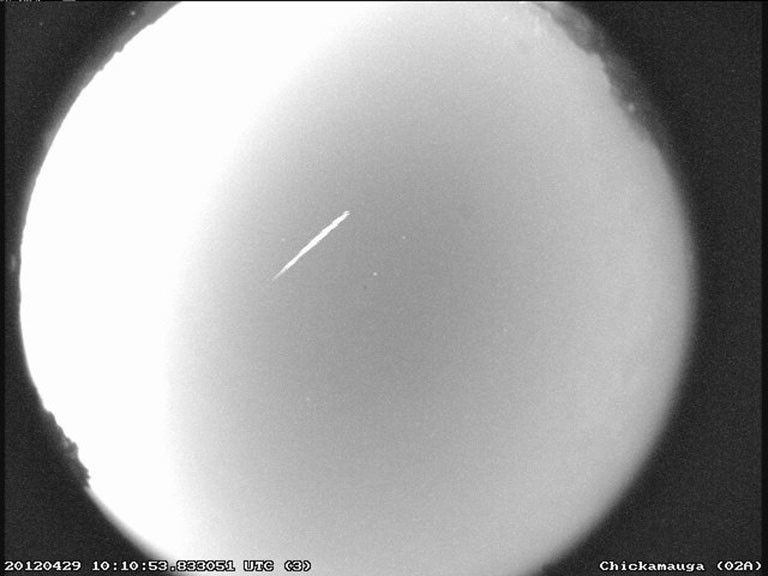Eta Aquariid Meteor Shower To Peak Night of May 5
By Wayne Smith
Ahh, spring. Trees are budding, flowers are blooming. Birds are singing and baseball is back. As the old English proverb says, April showers bring May flowers.
And skywatchers will soon have an additional reason to enjoy nature’s regeneration – the Eta Aquariid meteor shower, which will streak across the night sky following April’s Lyrid meteor shower. The Eta Aquariid meteor shower peaks during early May each year. Known for their speed, the meteors are active this year from April 20 to May 21. The meteor shower will peak the night of May 5 into the morning hours of May 6.
“The light from the waxing Moon will wash out the fainter meteors this year – expect to see at most 10-15 meteors per hour just before dawn on the morning of the 6th.” said Bill Cooke, who leads NASA’s Meteoroid Environments Office at the agency’s Marshall Space Flight Center in Huntsville, Alabama.
To catch the meteors at their peak, go outside around 2 a.m. local time on May 6 and lie on your back. Look away from the Moon, and give your eyes about 30 minutes to adjust to the dark. Avoid looking at bright lights, such as your cell phone, too, as this will take your eyes off the sky and ruin your night vision.
The pieces of space debris that interact with our atmosphere to create the Eta Aquariids originate from Comet 1P/Halley. Each time that Halley returns to the inner solar system, its nucleus sheds a layer of ice and dust into space. The dust grains eventually become the Eta Aquariids in May and the Orionids in October if they collide with Earth’s atmosphere.
Comet Halley takes about 76 years to orbit the Sun once. The last time it was seen by casual observers was in 1986. Comet Halley will not enter the inner solar system again until 2061.
Comet Halley was discovered in 1705 by Edmund Halley. He predicted the orbit of the comet through past observations of comets, suggesting that these sightings were in fact all the same comet. Halley is perhaps the most famous comet and has been observed for millennia. This comet is even featured in the Bayeux tapestry, which chronicles the Battle of Hastings in 1066.
Where does the name of the shower come from? The point in the sky from which the Eta Aquariids appear to come, known as the radiant, is in the constellation Aquarius – the water bearer. One of the brighter stars within Aquarius is called Eta Aquarii, and the shower meteors appear from this area of the constellation.
Read more about meteors here.
Lane Figueroa
Marshall Space Flight Center, Huntsville, Ala.
256.544.0034
lane.e.figueroa@nasa.gov




























